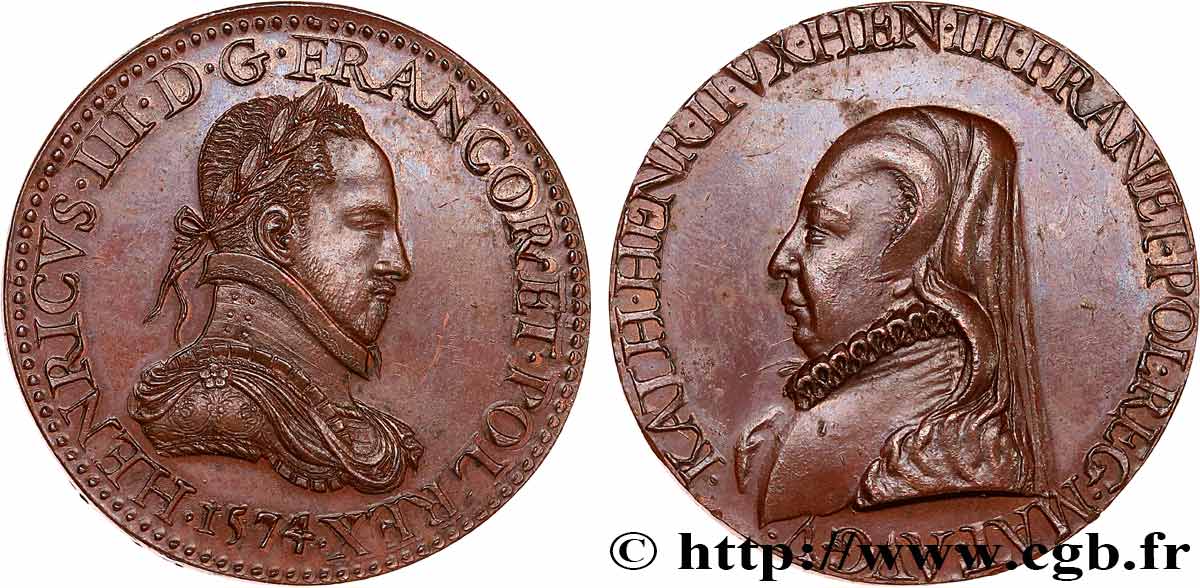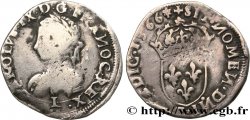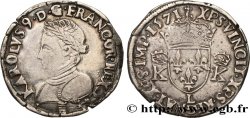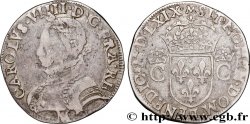fme_744327 - CHARLES IX Médaille, Charles IX et Catherine II de Médicis, frappe moderne
100.00 €(Approx. 108.00$ | 83.00£)
Quantity
Add to your cart

Type : Médaille, Charles IX et Catherine II de Médicis, frappe moderne
Date: (1565)
Metal : copper
Diameter : 37,5 mm
Orientation dies : 12 h.
Weight : 24,22 g.
Edge : lisse
Puncheon : sans poinçon
Coments on the condition:
Jolie patine marron avec des traces de manipulation dans les champs. Petite usure sur certains reliefs
Predigree :
Cet exemplaire provient de la collection Marineche
Obverse
Obverse legend : CAROLVS IX GALLIARVM REX CHRISTINAIS 1565.
Obverse description : Buste lauré, drappé et cuirassé de Charles IX à droite.
Reverse
Reverse legend : KATHARI. REGIN. HENRI. II. VXOR. FRANCIS. ET CAROL. REGVM MATER.
Reverse description : Buste à gauche de Catherine II.
Commentary
Catherine de Médicis est plutôt associée à Henri II qu’à Charles IX sur les médailles de ce genre.
Elle est née le 13 avril 1519 à Florence (République florentine) sous le nom de Caterina Maria Romola di Lorenzo de' Medici et morte le 5 janvier 1589 à Blois (France).
Fille de Laurent II de Médicis (1492-1519), duc d'Urbino, et de Madeleine de la Tour d'Auvergne (1495-1519), elle grandit en Italie d'où elle est originaire par son père. À la mort de ses parents, elle hérite du titre de duchesse d'Urbino, puis de celui de comtesse d'Auvergne à la mort de sa tante Anne d'Auvergne en 1524.
Par son mariage avec le futur Henri II, elle devient Dauphine et duchesse de Bretagne de 1536 à 1547, puis reine de France de 1547 à 1559. Mère des rois François II, Charles IX, Henri III, des reines Élisabeth (reine d'Espagne) et Marguerite (dite « la reine Margot », épouse du futur Henri IV), elle gouverne la France en tant que reine-mère et régente de 1560 à 1563..
Elle est née le 13 avril 1519 à Florence (République florentine) sous le nom de Caterina Maria Romola di Lorenzo de' Medici et morte le 5 janvier 1589 à Blois (France).
Fille de Laurent II de Médicis (1492-1519), duc d'Urbino, et de Madeleine de la Tour d'Auvergne (1495-1519), elle grandit en Italie d'où elle est originaire par son père. À la mort de ses parents, elle hérite du titre de duchesse d'Urbino, puis de celui de comtesse d'Auvergne à la mort de sa tante Anne d'Auvergne en 1524.
Par son mariage avec le futur Henri II, elle devient Dauphine et duchesse de Bretagne de 1536 à 1547, puis reine de France de 1547 à 1559. Mère des rois François II, Charles IX, Henri III, des reines Élisabeth (reine d'Espagne) et Marguerite (dite « la reine Margot », épouse du futur Henri IV), elle gouverne la France en tant que reine-mère et régente de 1560 à 1563..








 Report a mistake
Report a mistake Print the page
Print the page Share my selection
Share my selection Ask a question
Ask a question Consign / sell
Consign / sell
 Full data
Full data










